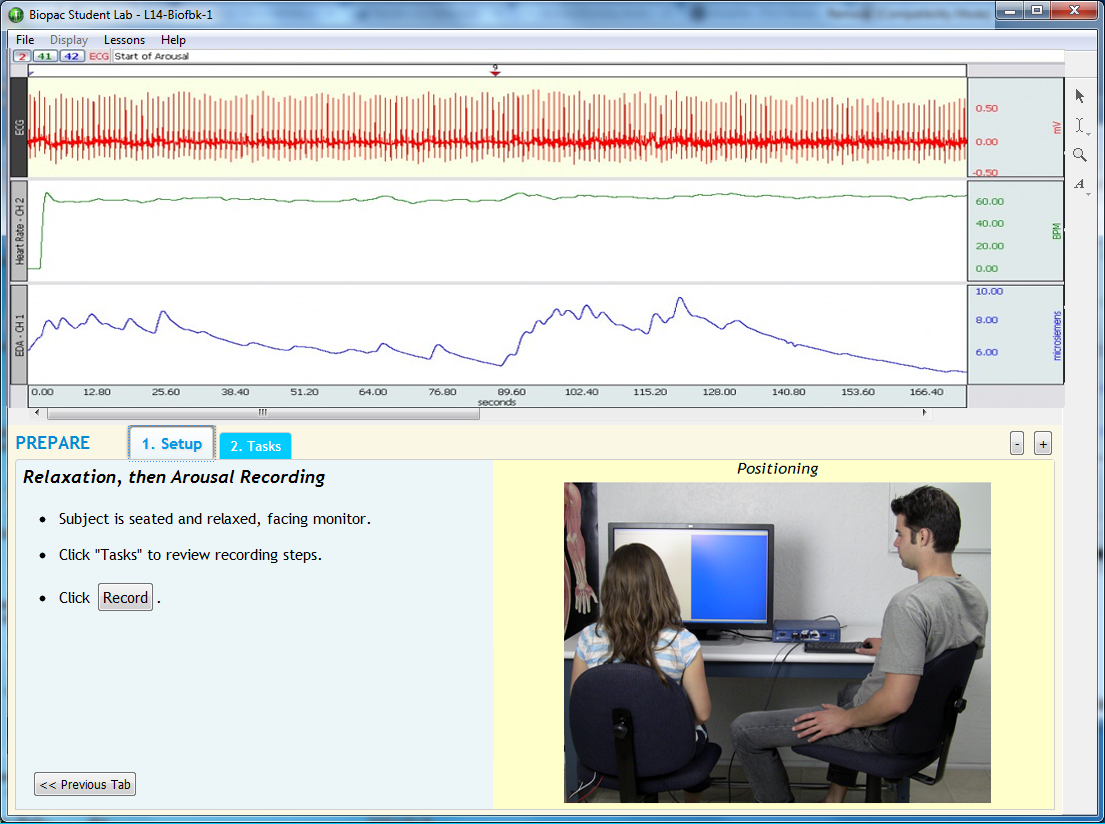L14 Biofeedback

This lesson demonstrates the principles of biofeedback training for relaxation purposes. The student will record and view ECG, heart rate, and electrodermal activity (EDA). Subjects control the position of a vertical bar graph by influencing their heart rate and EDA. As heart rate increases, the bar moves up; if the heart beats slower, the bar moves down. A separate bar moves up as EDA increases and down as EDA decreases.
Experimental Objectives
-
Introduce the concept of biofeedback training for relaxation.
-
Measure levels of arousal via heart rate and electrodermal activity.
Tasks Performed by the Student
BSL Lessons are designed to allow at least four students to record and save data in a normal lab period (60-90 minutes). Typically, labs work most efficiently with three or more students working together at each BSL station.
- Record ECG, heart rate and EDA.
- Sit and relax for 90 seconds.
- Then try to increase their heart rate and GSR by increasing arousal for 90 seconds.
Videos
BSL L14 Calibration
Biopac Student Lab Student Download
Lesson Hardware
This lesson requires a Biopac Student Lab (BSL) System and the following hardware. If your BSL System does not include all hardware items, expand your system by selecting required items below. For more details, review the Lesson: L# BSL Lessons - see the Lab Manual or launch BSL; A# and H# BSL PRO Lessons, click the PDF link above to review full setup, recording, and analysis procedures.
Stay Connected